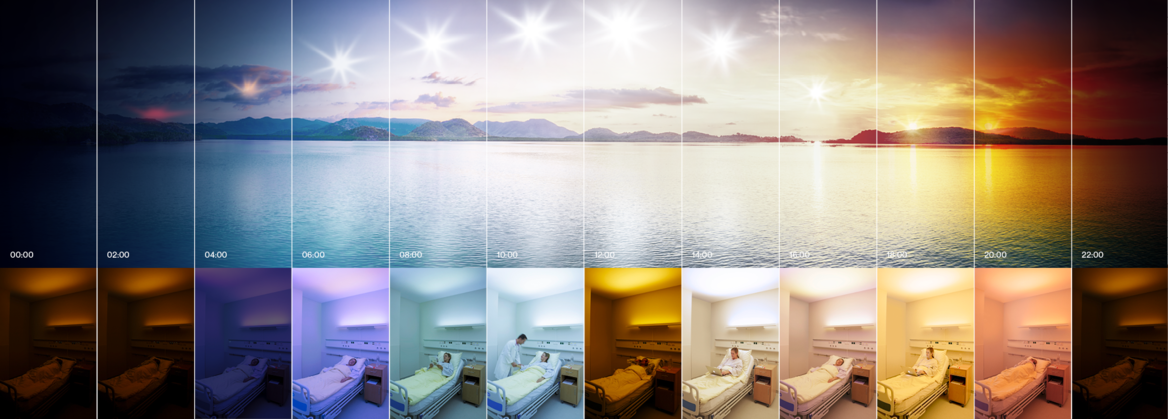Circadian lighting
Many lighting designers have already experienced Tuneable White luminaires. A DALI control system can usually operate the two light colours. The light's intensity and colour can thus be adjusted. If dynamic light is desired instead of static light, a light curve can be set according to the time of day. Such a light curve is a step forward from static lighting
Dual-channel light control is inadequate if one wants to take full advantage of the latest technology. Lighting designers working on sophisticated lighting designs, for example for a psychiatric clinic, want circadian lighting with the option of using all-natural colour temperatures. The dim curve should run on the Black Body Line if possible. The highest possible colour rendering of the Ra and Re values of > 90 is required. Furthermore, providing biologically effective illuminance of at least 250 MEDI Lux (Melanopic Equivalent Daylight Illuminance), at least in the morning, is needed.
What is MEDI Lux?
MEDI (Melanopic Equivalent Daylight Illuminance) MEDI Lux is the melanopic and daylight-equivalent illuminance. 250 MEDI is the minimum illuminance above which the biological setting of the internal clock takes place (see DIN SPEC 67600). This should prevail throughout the day as vertical illuminance at head position in order to set a biological effect in motion. The conversion from MEDI lux to visually assessed lux is as follows:
250 MEDI divided by the product of luminaire-specific melanopic effect factor MR (Melanonopic Ratio) and the daylight correction factor. For example, a typical 4000K Ra > 80 luminaire has an MR of 0.75.
250 / (0.75 x 0.906) = 368 lx
This can be professionally implemented with an RGB LED controller whose colour points are exactly on the Black Body Line across all colour temperatures. Conventional RGB controllers' colour points tend to shift significantly over their operating life. The red and green LED chip used is based on a blue diode, guaranteeing stable colour points over the entire service life. Thus, all three LED chips are based on the same blue chip, with the significant advantage that all chips age at equal rates. This is the only way to achieve high colour stability with precise dimming on the Black Body Line. Colour temperatures from 1800 K to 16000 K can be produced in addition to saturated coloured red, green, and blue light. Bespoke colour temperature gradients can be set. The LEDs are controlled via analogue current regulation, enabling flicker-free dimming.
Bright wide-area ceilings and wall surfaces are needed for circadian lighting. A ceiling strip light installed on the wall above doorways offers the best results. Very narrow-distribution linear lenses can direct the light deeply into the room, creating an artificial sky.
How is a daylight programme created?
Programming via a DALI controller offers one option. DALI can also be scaled for exceptionally large applications. If smaller areas are needed, for example for recreation rooms or classrooms, XAL have a smart control system in their portfolio. Daylight programmes can be created very easily via XAL's MASTER UNIT and RECOVER software. It is even possible to compile an annual lighting sequence from multiple daylight programmes. This automatically mimics seasonal light variations.
Do you have any questions?
Our lighting experts are happy to help you create circadian lighting solutions.








